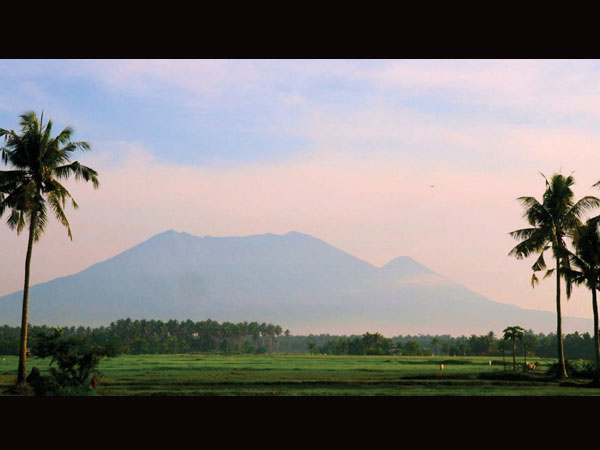Syndicates dupe Banahaw trekkers

A SCENIC view of Mt. Banahaw and the verdant rice fields in Sariaya, Quezon Delfin Mallari Jr.
Mystical Mt. Banahaw, a favorite destination of mountaineers and campers, is still closed to the public for environmental reasons, yet unscrupulous groups are luring visitors to gain access for a fee, according to an environment official.
Sally Pangan, park superintendent for Banahaw, said concerned mountaineers had reported the operations of the con groups via the Internet, victimizing nature trippers from Manila who are curious about rediscovering Banahaw since entry to certain areas was prohibited eight years ago.
“When we conducted our own investigation, we found that the pseudo-mountaineer groups charge P1,500 per person in exchange for unhampered access and camping inside the area of Banahaw de Dolores (the part of the mountain facing Dolores town in Quezon),” Pangan said in an interview.
Banahaw, which used to be visited by about half a million people during Holy Week, straddles Lucban, Tayabas, Sariaya, Candelaria and Dolores towns in Quezon province and Rizal, Nagcarlan, Liliw and Majayjay towns, and San Pablo City in Laguna province.
It was closed to the public since 2004 to allow areas damaged by slash-and-burn farming and littering to recover.
Article continues after this advertisement3 more years
Article continues after this advertisementThe Protected Area Management Board for Banahaw and Mt. San Cristobal has officially declared Banahaw de Dolores and Banahaw de Tayabas off-limits to trekkers for the next three years or until 2015.
Pangan said the illegal mountain hikers were enticing victims through several Facebook pages, asking them to join mountain cleanup activities with bonus camping for a day or two in several spots inside the prohibited areas.
“The syndicate assures their victims that their mountain activity has a permit from the DENR (Department of Environment and Natural Resources). The Facebook pages even posted photos of several groups enjoying their stay inside the prohibited areas,” she said.
The official declined to name the social network pages. “We’re still gathering enough evidence to pin down the persons behind the sites,” she said.
Pangan acknowledged that she had issued “cleanup” permits several months ago to several mountaineering groups for certain portions outside of the prohibited areas. She identified a certain Victor, a resident of Barangay Sta. Lucia in Dolores, as one of the project initiators.
“But we learned that the permit holders broke the rules and even initiated a camp-out at the peak. Apparently, they used the cleanup project as a front of their illegal mountain sojourn,” she said.
No cleanup permits
She said her office had stopped issuing cleanup permits but she learned from village officials at the foot of the mountain that her signature has been forged by the con groups. “My signature was scanned and affixed to the fake DENR documents which they showed to their gullible victims,” she said.
According to Pangan, the mountain side in Tayabas is still off limits to prevent hunters of the fabled Japanese treasures from destroying the pristine caves found in the area.
“Mountaineers can climb Mt. Banahaw from Lucban (town in Quezon) and any part of Laguna, but they are required to secure a permit from my office to make their hike legal,” Pangan said.
Mountaineers and trekkers can also climb Cristobal if they have permits.
The DENR office lacks personnel to help in the monitoring of mountain activities, so Pangan said she had asked policemen, Army soldiers and concerned villagers to track down the illegal intruders.
“We will arrest any intruders,” she warned.